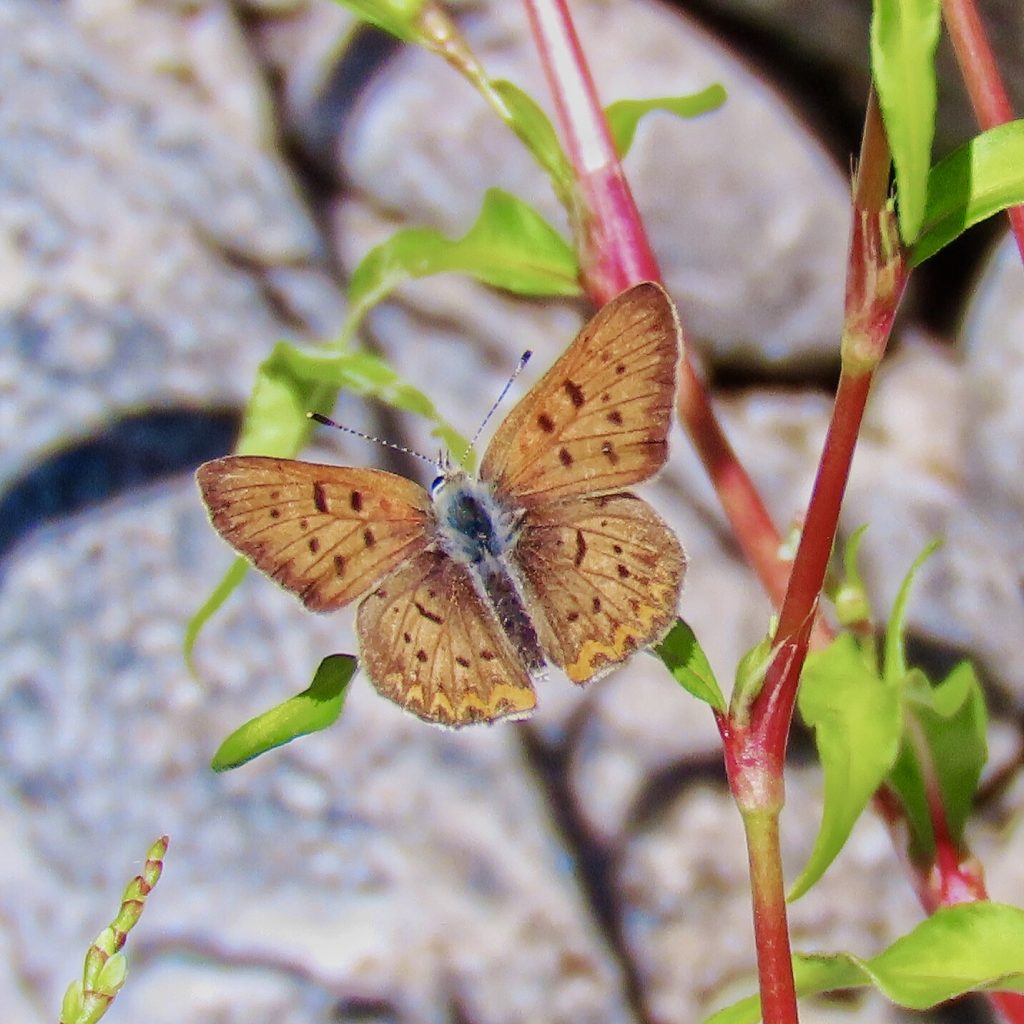
This is by far the most abundant copper west of the Cascades, and the only copper that is found region wide. They have two broods (bivoltine), with a peak in May and August. At times, like the day I found these on the Wilson River, they are virtually the only butterfly around.
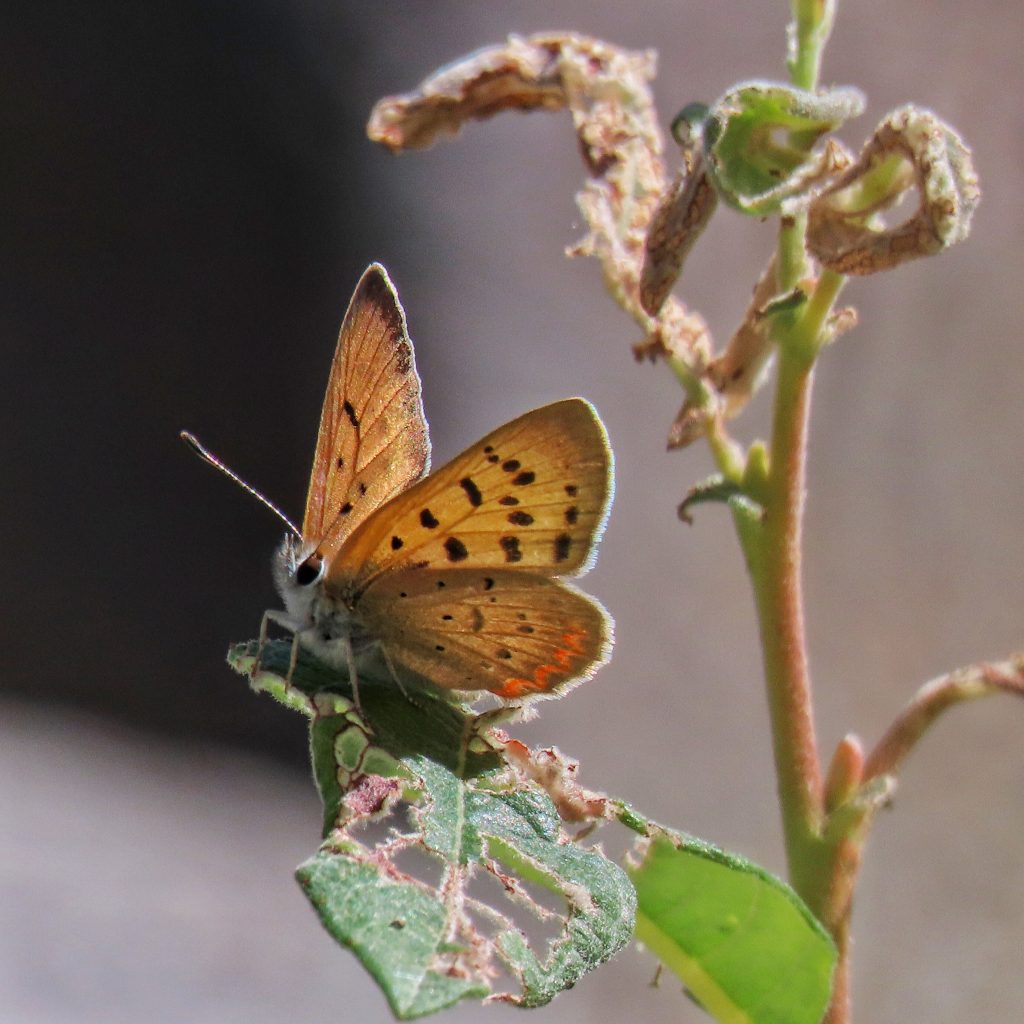
The combination of dark spots on yellow ground color of the ventral forewing, tiny dots on a grayer ventral hindwing, and orange zigzag at the margin of the dorsal hindwing is diagnostic.
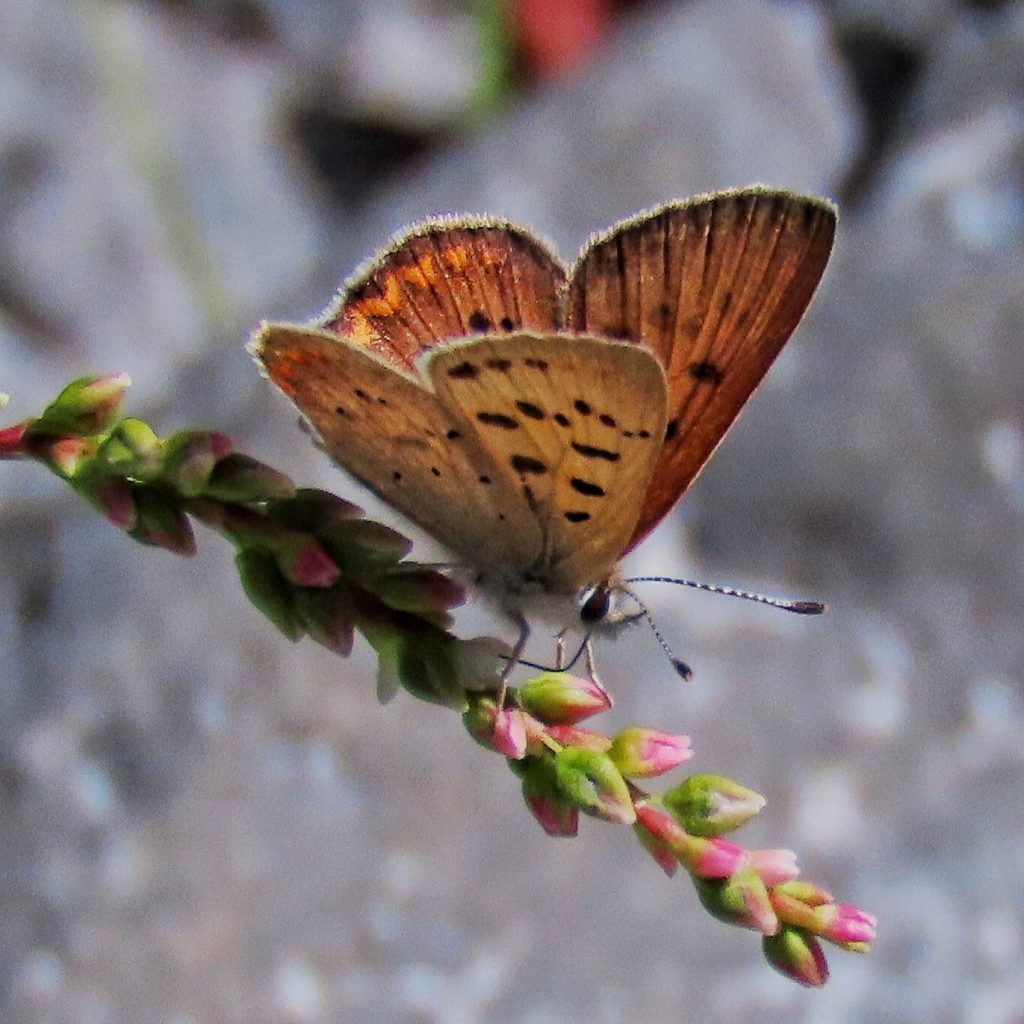
Larval hosts include Persicaria maculosa (Lady’s Thumb), Rumex obtusifolius (Broadleaf Dock) and a variety of other knotweeds and smartweeds (all of which were common on that section of the Wilson River), as well as silverweeds in the genus Argentina. The ubiquitous nature of these weedy species allows this butterfly to flourish while others are declining due to habitat loss, including in urban areas, where Purplish Coppers and Cabbage Whites may be the only butterflies around.
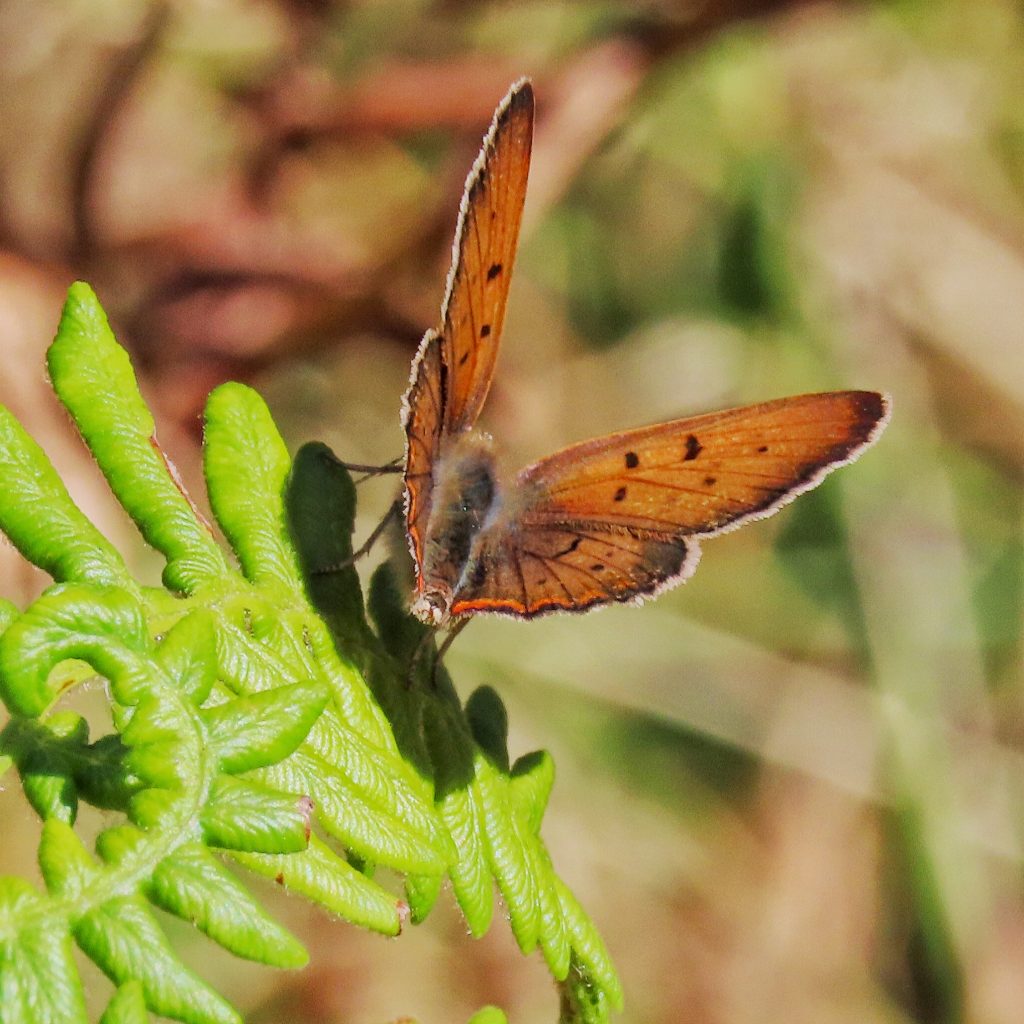
Lycaena helloides are a personal favorite of mine. They are not large (wingspan to 1 1/2”), nor are they gaudy. But they are very cheering, like small flowers on the wing, especially fresh males flashing iridescent purple in the sun.
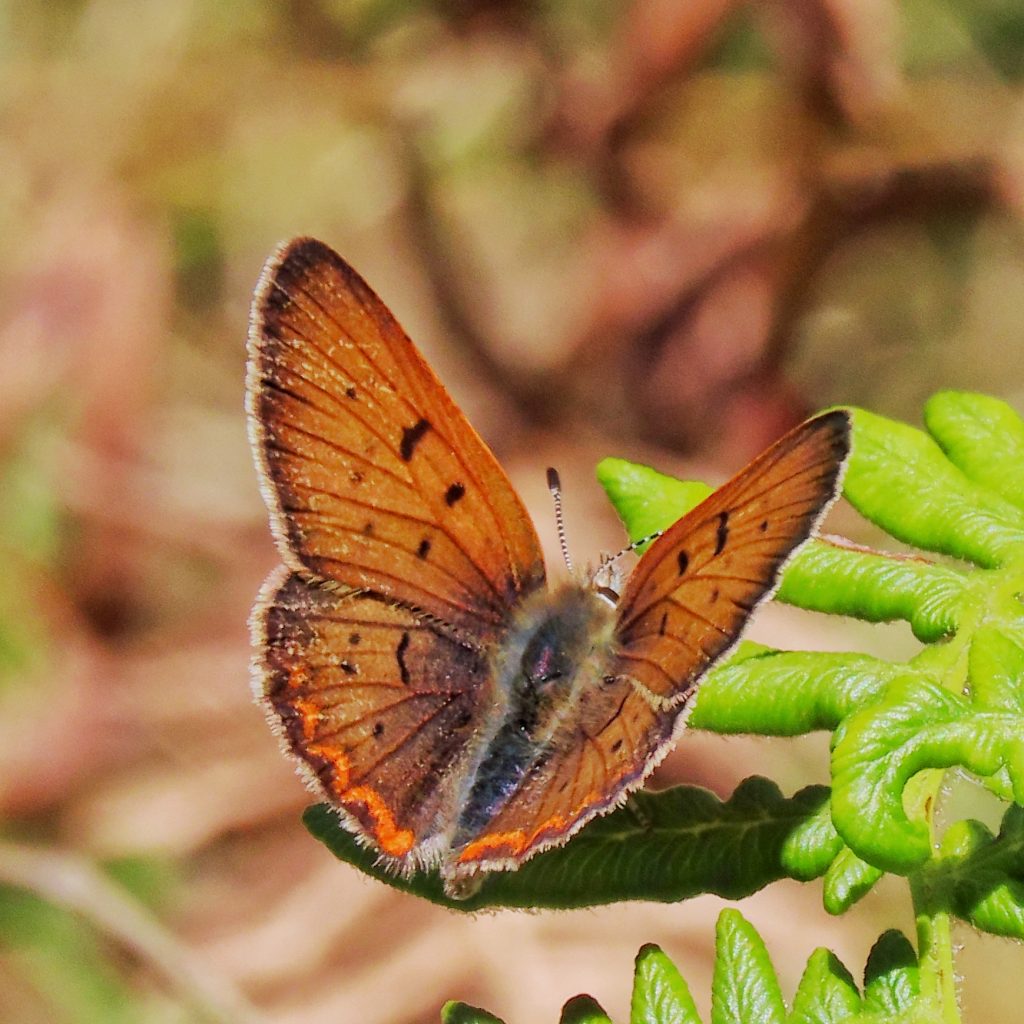
And they are calming. Purplish Coppers are not frenetic, unlike so many Lycaenids, and I often find them perching in places that offer no sustenance. Which is not to say they are easily approachable. I have a harder time getting close enough to photograph them than I do with many other species. But if they are undisturbed, my experience is that they will stay in one spot for longer than most butterflies.
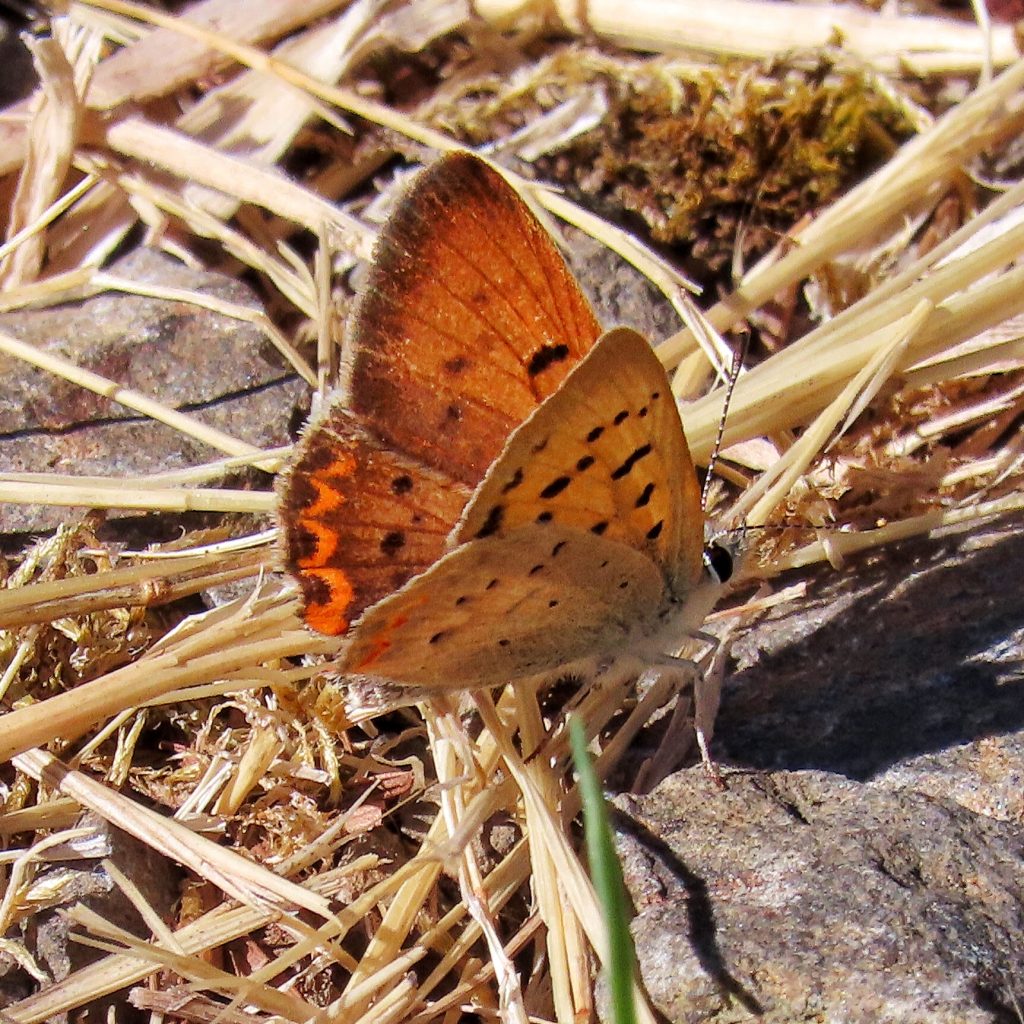
http://fieldguide.mt.gov/speciesDetail.aspx?elcode=IILEPC1130
http://www.learnaboutbutterflies.com/North%20America%20-%20Lycaena%20helloides.htm
http://butterfly.ucdavis.edu/butterfly/Lycaena/helloides
https://en.m.wikipedia.org/wiki/Lycaena_helloides
Size- Wingspan to 1.5”
Habitat- Open areas, often near water
Range- Region wide
Eats- Larval hosts include Rumex spp., Persicaria spp., and Argentina spp. (silverweeds).
Flight Season- April to October, with peaks in May and August
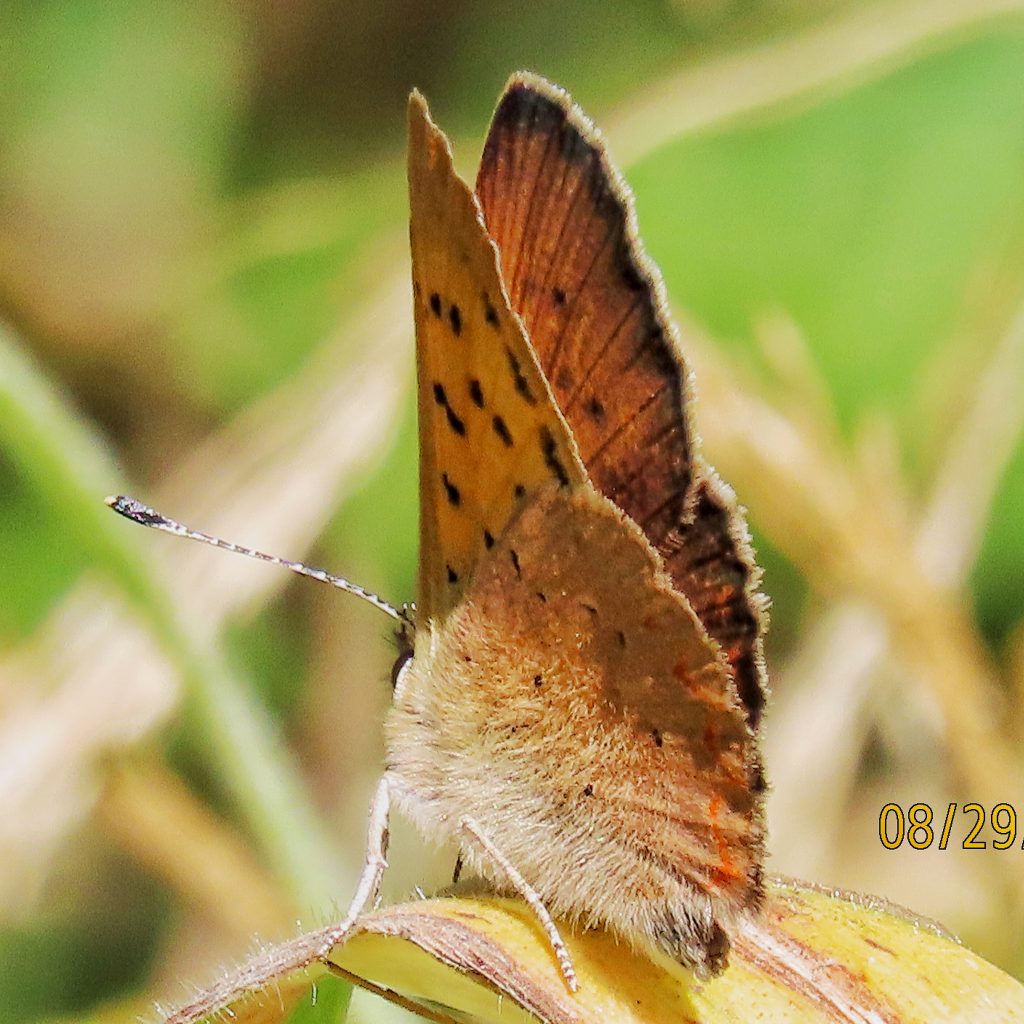
Great pictures! They are very cheerful! Thank you!